
[スーパーファミコン]
聖剣伝説3
シャルロット
#SQUARE #ドット絵 #pixelart
@semios.is.bsky.social

[スーパーファミコン]
聖剣伝説3
シャルロット
#SQUARE #ドット絵 #pixelart

#vocaloid
01.06.2025 17:58 — 👍 272 🔁 126 💬 0 📌 0
Mayumi watches Mutio peacefully swim among the fish and rays
The Virginia Aquarium ft me aging myself incredibly. Happy 25 year anniversary to the Blue Sub No 6 OVA!
Thank you to @droachillustra.bsky.social

bold to assume that having a polynian on your shelf won't make you instantly irresistible
08.09.2025 03:03 — 👍 1 🔁 0 💬 1 📌 0
3 different drawings of chimeras // lion , goat, snake creature
more chimera scrribbles
29.08.2025 18:37 — 👍 1119 🔁 442 💬 8 📌 1does this include the goat cybersix?
06.08.2025 00:45 — 👍 0 🔁 0 💬 1 📌 0📐
#art
How is the nervous system organized to coordinate behavior? To approach this massive question, a team led by @asbates.bsky.social, @jasper-tms.bsky.social, @mindyisminsu.bsky.social, & Helen Yang present the BANC: a Brain and Nerve Cord connectome.
Preprint: doi.org/10.1101/2025...
🧪#Neuroskyence
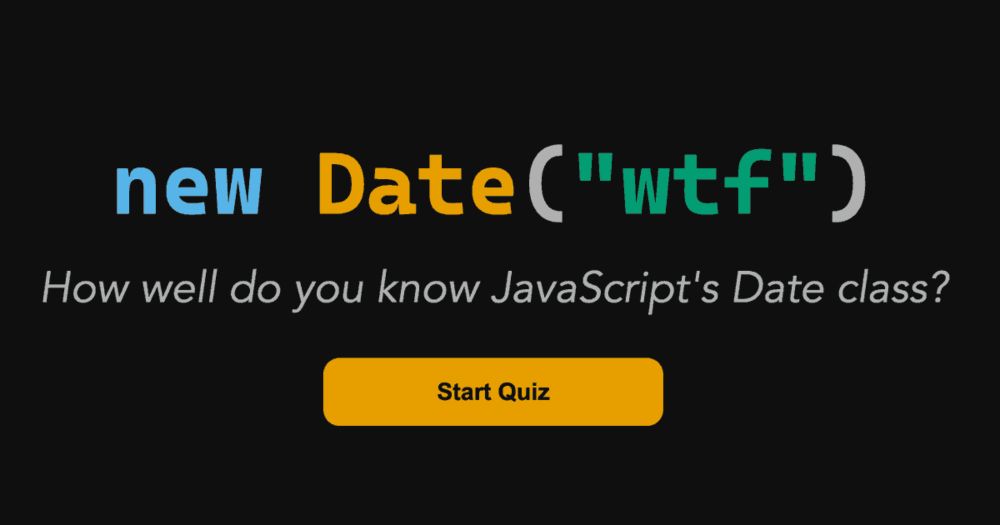
I made a quiz about the JS Date parser is. It's very easy and you will score very high.
jsdate.wtf

On today's new podcast we look at what the Laozi (Daodejing) has to say about nature and the environment!
www.historyofphilosophy.net/daoism-nature
Note this will be the last episode until September, we're on summer break over August.
#philsky #daoism #nature #daodejing #laozi
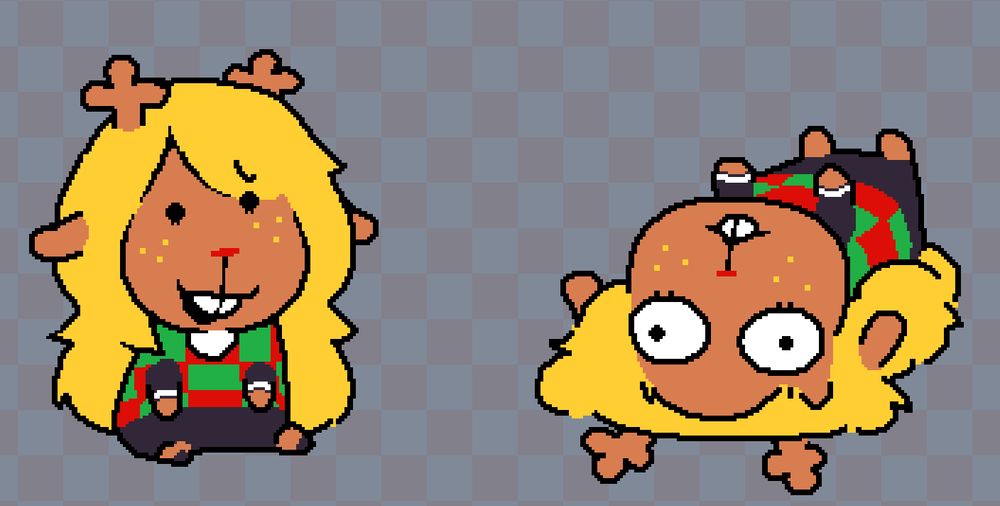
#deltarune #pixelart #art #ドット絵
06.11.2024 16:11 — 👍 1015 🔁 228 💬 6 📌 1
The Gödel-Löb formula box bracket box p implies p close bracket implies box p
Theorem of the day: Löb's theorem!
Löb proved that in Peano arithmetic, if you can prove that the proof of a proposition implies the proposition itself, then you can prove the proposition 🤪
So when I have a statement P, if I can prove the provability of P implies the truth of P, then I can prove P
We Hurt People
06.07.2025 00:17 — 👍 1737 🔁 781 💬 14 📌 23
speaking of cool things my friends have done: Clyde, aka Tomato, released a game which is kind of a digital Choctaw dictionary?? everything about it is SO clyde, i'm proud to be the 46th tomato: tomatogame.itch.io/halito-tomato
22.06.2025 19:58 — 👍 91 🔁 64 💬 2 📌 3
IKARUGA: Poster for IKARUGA. A top-down view of a graceful, birdlike aircraft against a soft gradient background. Geometry in the background assembles a vague HUD display, and text can be found throughout in several directions- “developed by TREASURE” “directed by HIROSHI IUCHI” “I WILL NOT DIE UNTIL I ACHIEVE SOMETHING. EVEN THOUGH THE IDEAL IS HIGH, I NEVER GIVE IN. THEREFORE, I NEVER DIE WITH REGRETS_” “I MAKE YOU ALIVE SO THAT YOU CAN WALK ALONG THE RIGHT WAY. BUT CAN’T YOU UNDERSTAND IT?” “IKARUGA” (in both Japanese and English)
Don’t worry, we will understand each other some day.
#jandriSFWart #ikaruga

I like to post Western artists influenced by Japanese woodblock to show how far-ranging this art form reached. Many artists tried to use painting techniques that looked like woodblock. UK artist Hilda Hechle (1886-1939) was one of these artists. Instead of yokai, she chose fairies and spirits.
14.04.2025 17:57 — 👍 101 🔁 21 💬 0 📌 1
Photo of L in front of a blackboard, via www.socialistalternative.org.
Richard Lewontin was born OTD in 1929.
In scientific research we devote “exquisite attention … to methodological problems that can be solved, while the pretense is made that the ones that cannot be solved are really nothing to worry about."
🌱🐋🦋🦫🧪#PhilSci #EvoBio #HistSTM

its so hard to stay motivated with everything going on rn
please stay safe everyone!! 💗🙏
#art #digitalart #fanart #littlemy #moominvalley #artist #csp
Wider than the Sky:
An Alternative to “Mapping” the World onto the Brain
(Ann-Sophie Barwich, Stuart Firestein, Michael Dietrich)
#neuroscience #PhilSky #PsychSciSky #philbio #cogpsyc
Significantly expanded revision submitted.
Preprint: osf.io/preprints/ps...
How it started... and how it went.
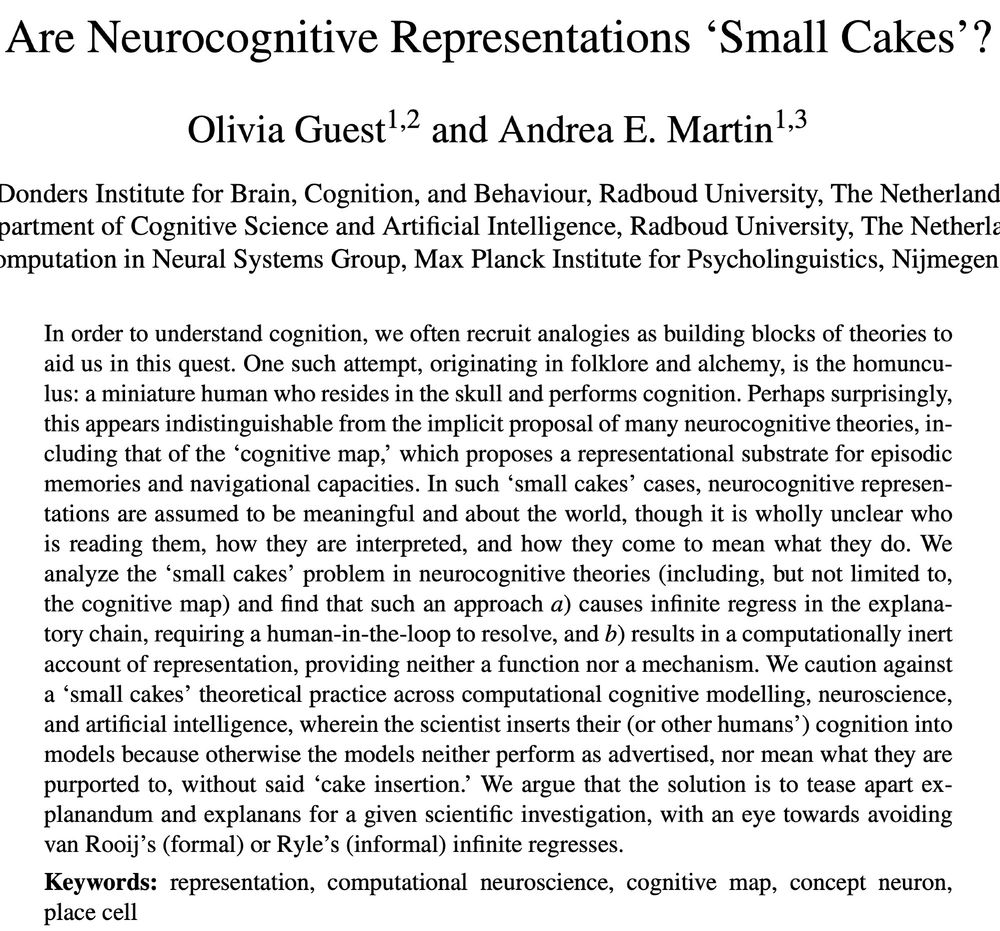
In order to understand cognition, we often recruit analogies as building blocks of theories to aid us in this quest. One such attempt, originating in folklore and alchemy, is the homunculus: a miniature human who resides in the skull and performs cognition. Perhaps surprisingly, this appears indistinguishable from the implicit proposal of many neurocognitive theories, including that of the 'cognitive map,' which proposes a representational substrate for episodic memories and navigational capacities. In such 'small cakes' cases, neurocognitive representations are assumed to be meaningful and about the world, though it is wholly unclear who is reading them, how they are interpreted, and how they come to mean what they do. We analyze the 'small cakes' problem in neurocognitive theories (including, but not limited to, the cognitive map) and find that such an approach a) causes infinite regress in the explanatory chain, requiring a human-in-the-loop to resolve, and b) results in a computationally inert account of representation, providing neither a function nor a mechanism. We caution against a 'small cakes' theoretical practice across computational cognitive modelling, neuroscience, and artificial intelligence, wherein the scientist inserts their (or other humans') cognition into models because otherwise the models neither perform as advertised, nor mean what they are purported to, without said 'cake insertion.' We argue that the solution is to tease apart explanandum and explanans for a given scientific investigation, with an eye towards avoiding van Rooij's (formal) or Ryle's (informal) infinite regresses.
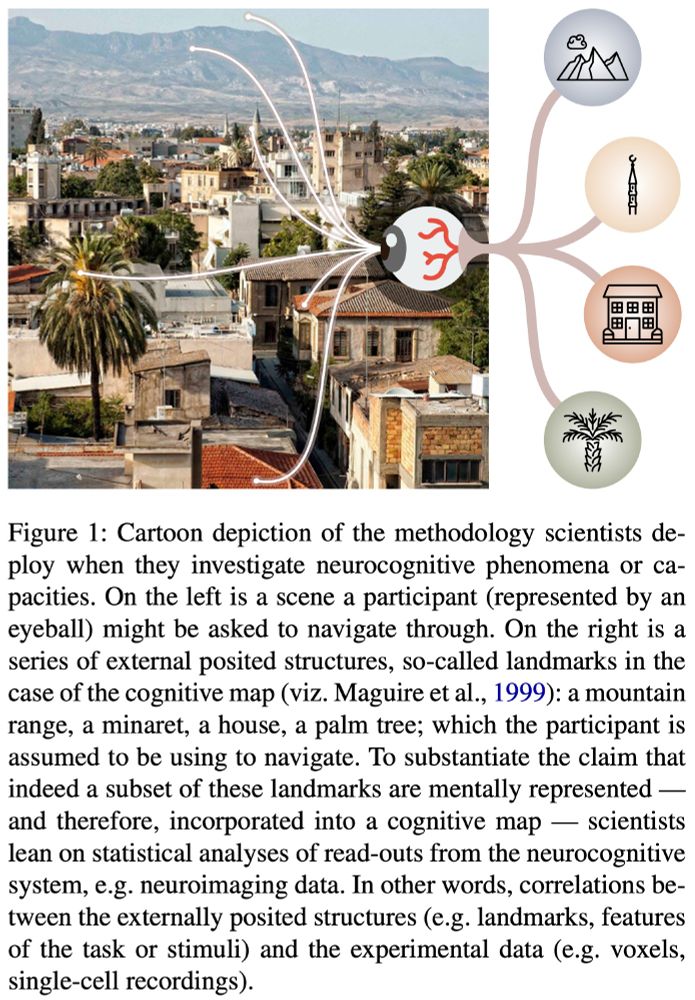
Figure 1 in https://philsci-archive.pitt.edu/24834/

Box 1 in https://philsci-archive.pitt.edu/24834/
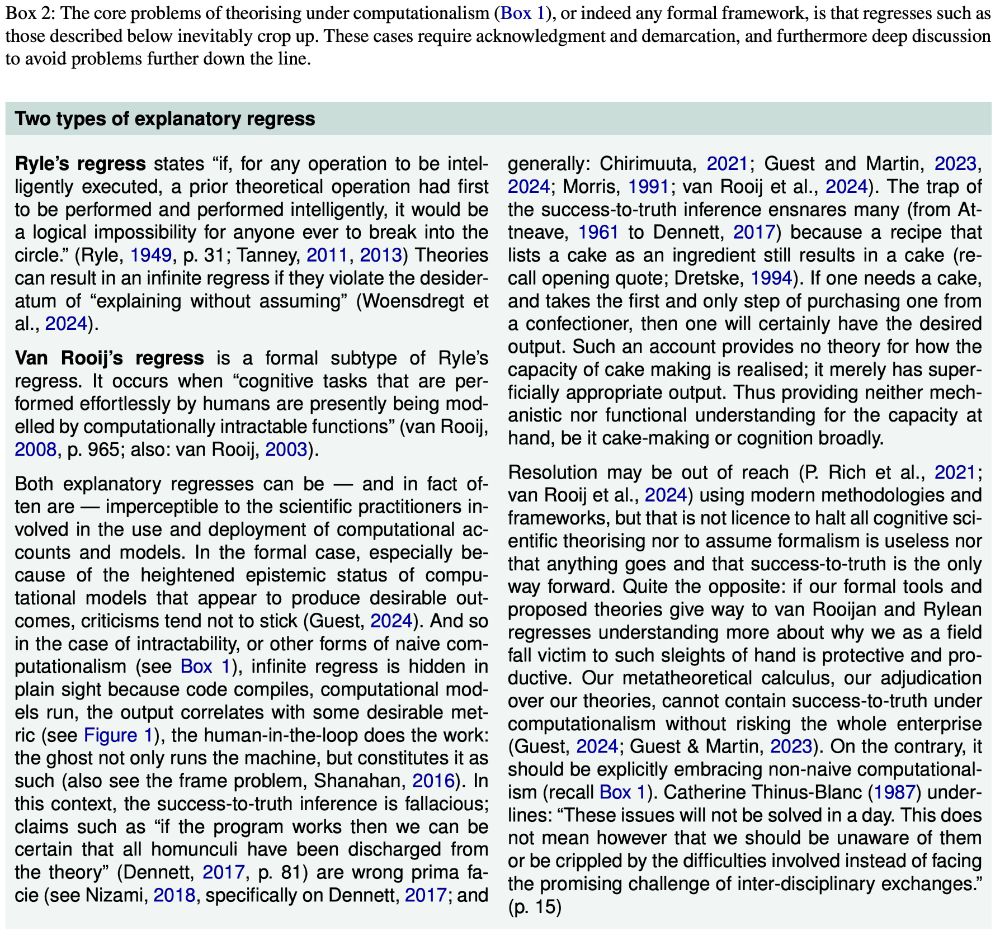
Box 2 in https://philsci-archive.pitt.edu/24834/
Tired but happy to say this is out w @andreaeyleen.bsky.social: Are Neurocognitive Representations 'Small Cakes'? philsci-archive.pitt.edu/24834/
We analyse cog neuro theories showing how vicious regress, e.g. the homunculus fallacy, is (sadly) alive and well — and importantly how to avoid it. 1/

For a bit of philoso-fun! Deniz Cem Önduygu's interactive visualisation of philosophy.
25.02.2025 16:16 — 👍 12 🔁 5 💬 0 📌 1
We are error-prone and error-tolerant—errors are unavoidable in the fabric of our lives, so we are well adapted to living with and learning from them. We learn more when things break down than when they work right. Cognitively speaking, we metabolize mistakes!
"Cognitively speaking, we metabolize mistakes."
I've been reading William Wimsatt and he expresses a core component of my teaching philosophy better than I ever managed.

A drawing of Rika from Phantasy Star IV. She's chuckling to herself with a thought bubble picturing a King Rappy right next to her.
When the star is phantastic, or something.
(I like Rika a lot, if you couldn't tell)
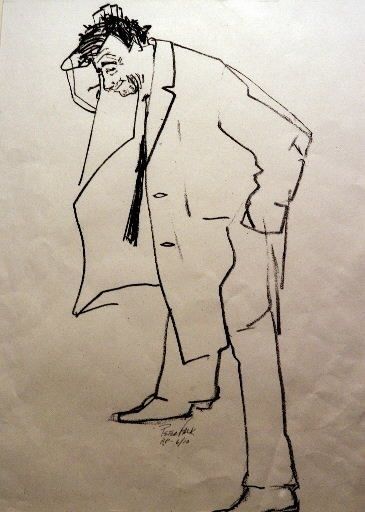
Columbo looking down.
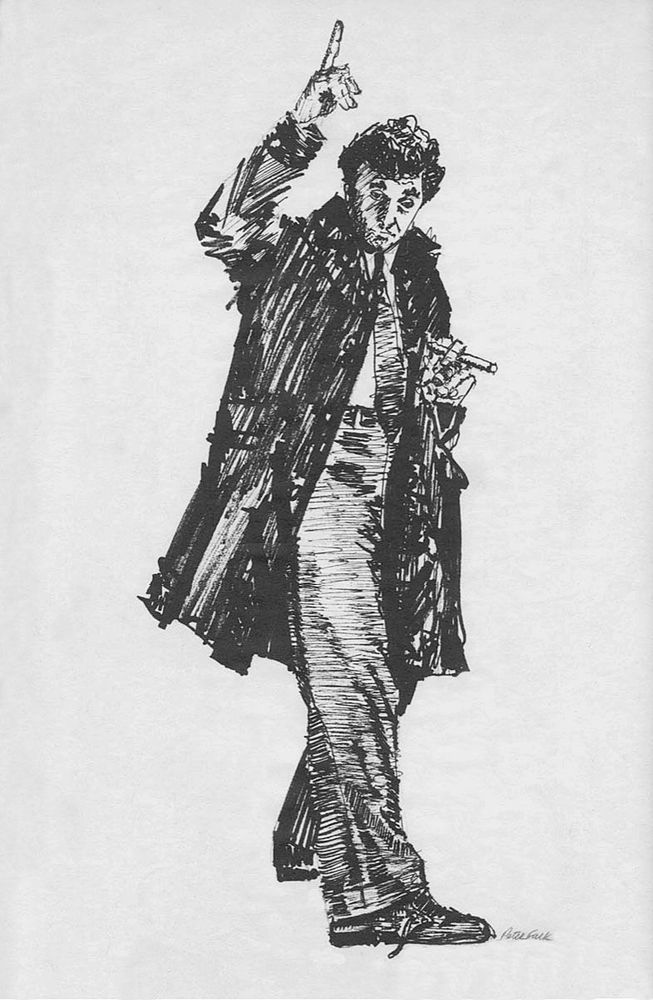
Columbo waving and has cigar in other hand.
Columbo self-portraits by Peter Falk. #art
15.07.2023 15:30 — 👍 448 🔁 145 💬 7 📌 13
Rings appear to be entangled.
09.02.2025 01:25 — 👍 31 🔁 11 💬 0 📌 0conceptual being made of abstract shapes turns into little bunny
26.01.2025 06:03 — 👍 288 🔁 61 💬 5 📌 4Unless we can use some kind of vibe checking heuristic
13.01.2025 17:53 — 👍 1 🔁 0 💬 0 📌 0
how it feels when you say there's a language of thought
20.12.2024 04:35 — 👍 36 🔁 7 💬 0 📌 0Ad Hoc Tuah
06.12.2024 23:45 — 👍 50 🔁 10 💬 4 📌 2